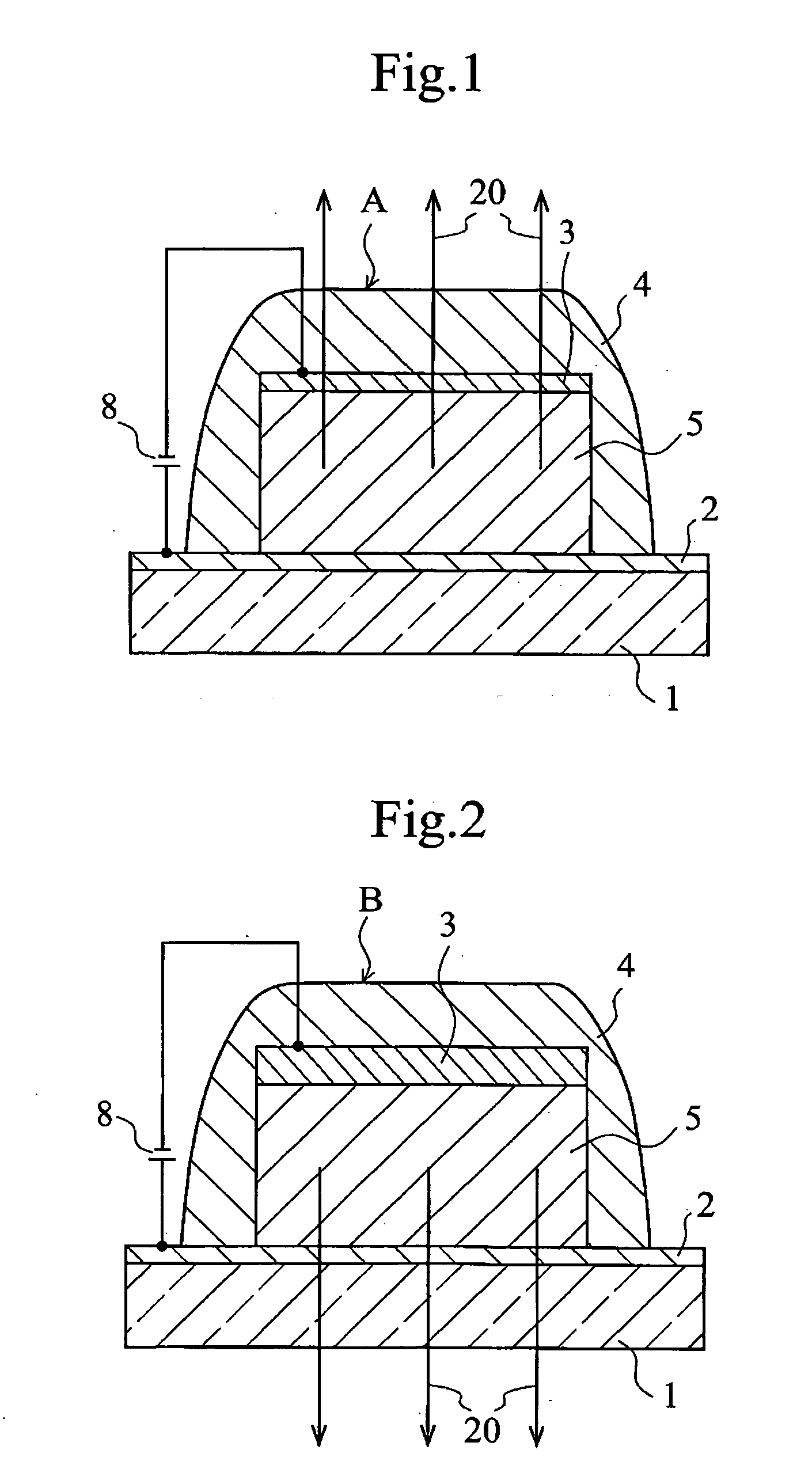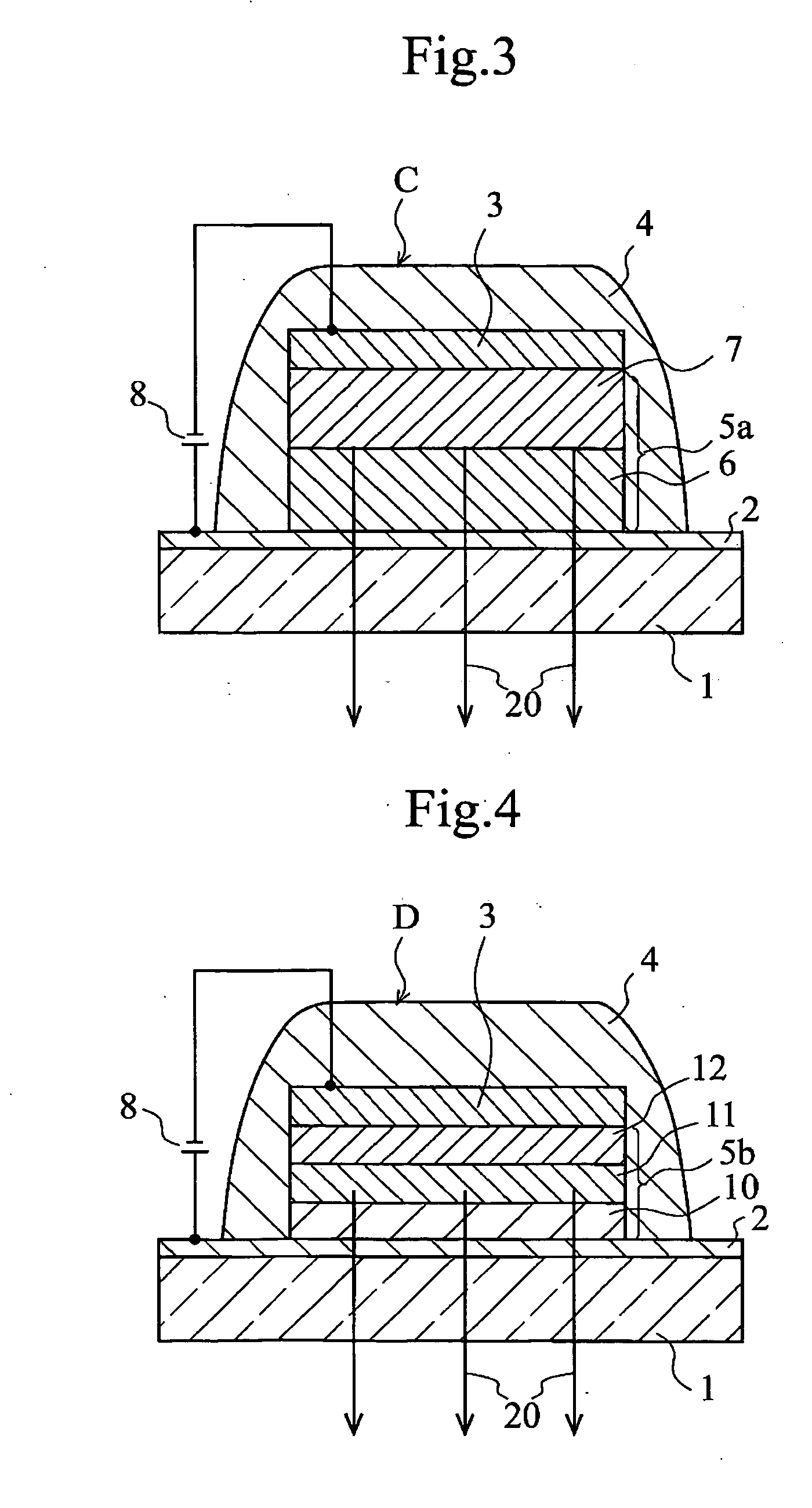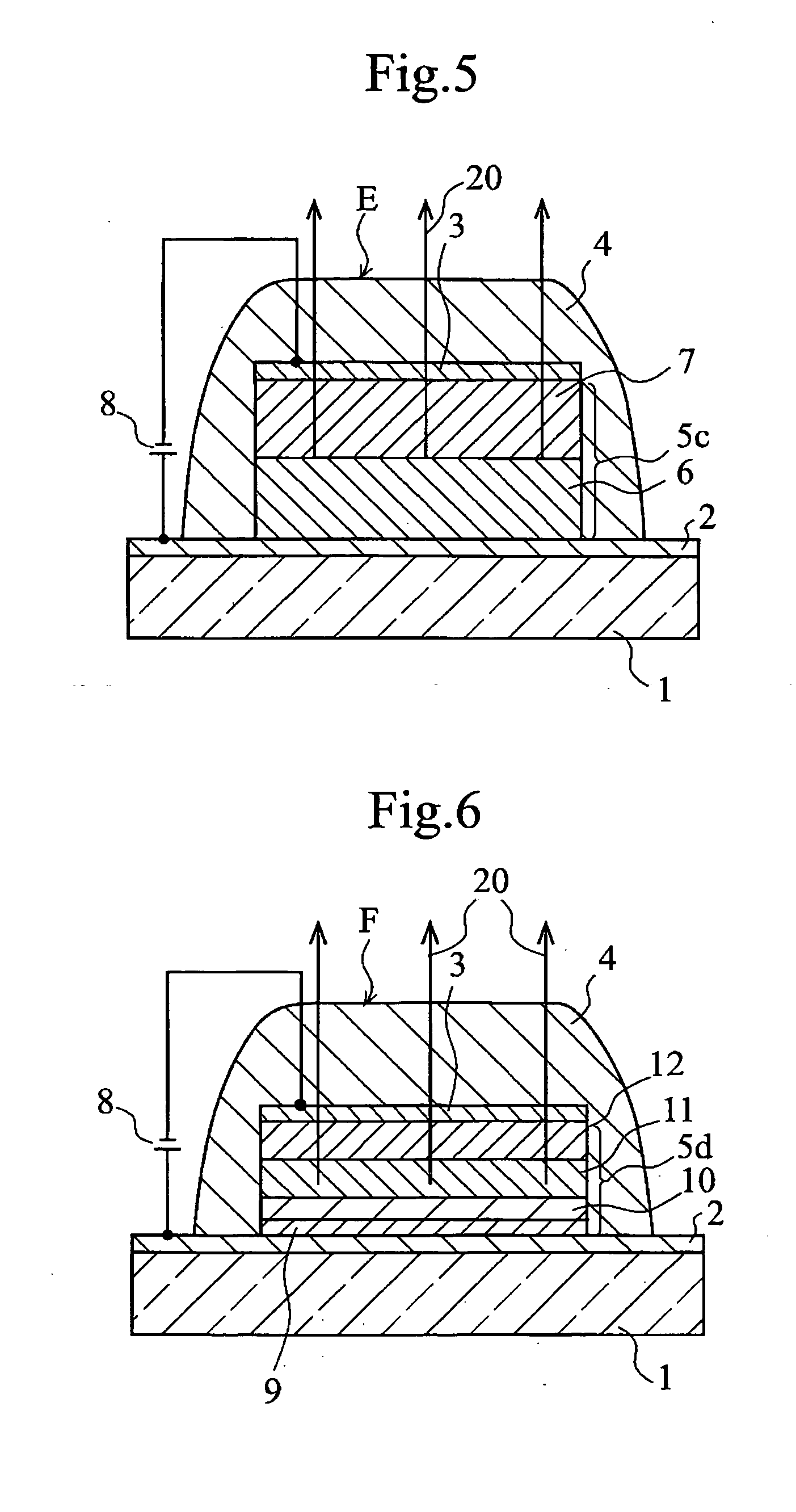Organic electroluminescent element and lumiscent device or display including the same
a lumiscent device and electroluminescent element technology, applied in the direction of discharge tube luminescnet screens, other domestic articles, etc., can solve the problems of large amount of electric power consumption, bulky display devices, and large amount of backlight, and achieve high color purity, superior luminance, and thermal stability.
- Summary
- Abstract
- Description
- Claims
- Application Information
AI Technical Summary
Benefits of technology
Problems solved by technology
Method used
Image
Examples
example 1
[0086] This example demonstrates an organic electroluminescent element (bottom emitting type) of single hetero structure in which the hole transporting layer which functions also as the emitting layer (hole transporting and emitting layer) is formed from a mixture of an aminostyryl compound represented by the structural formula (17)-11 below (which is one of the styryl compounds represented by the general formula [I] given above) and α-NPD (α-naphthylphenyldiamine).
[0087] First, a glass substrate, measuring 30 mm by 30 mm, was placed in a vacuum deposition apparatus. This glass substrate has an anode of ITO film (100 nm thick) formed on one surface thereof. The glass substrate underwent vacuum deposition at 10−4 Pa or less, with a metal mask arranged close thereto, which has a plurality of openings, each measuring 2.0 mm by 2.0 mm. The vacuum deposition gave rise to a 50-nm thick hole transporting layer (which functions also as the emitting layer) composed of the styryl compound r...
example 2
[0092] This example demonstrates an organic electroluminescent element (bottom emitting type) of single hetero structure in which the electron transporting layer which functions also as the emitting layer (electron transporting and emitting layer) is formed from a mixture of a styryl compound represented by the structural formula (17)-11 given above (which is one of the styryl compounds represented by the general formula [I] given above) and Alq3 represented by the structural formula given above.
[0093] First, a glass substrate, measuring 30 mm by 30 mm, was placed in a vacuum deposition apparatus. This glass substrate has an anode of ITO film (100 nm thick) formed on one surface thereof. The glass substrate underwent vacuum deposition at 10−4 Pa or less, with a metal mask arranged close thereto, which has a plurality of openings, each measuring 2.0 mm by 2.0 mm. The vacuum deposition gave rise to a 50-nm thick layer of α-NPD represented by the structural formula given above. The ra...
example 3
[0098] This example demonstrates an organic electroluminescent element (bottom emitting type) of double hetero structure in which the electron transporting and emitting layer is formed from a mixture of a styryl compound represented by the structural formula (17)-11 given above (which is one of the styryl compounds represented by the general formula [I] given above) and Alq3 represented by the structural formula given above.
[0099] First, a glass substrate, measuring 30 mm by 30 mm, was placed in a vacuum deposition apparatus. This glass substrate has an anode of ITO film (100 nm thick) formed on one surface thereof. The glass substrate underwent vacuum deposition at 10−4 Pa or less, with a metal mask arranged close thereto, which has a plurality of openings, each measuring 2.0 mm by 2.0 mm. The vacuum deposition gave rise to a 30-nm thick layer of α-NPD represented by the structural formula given above. The rate of deposition was adjusted to 0.2 nm / s.
[0100] Then, on the hole trans...
PUM
| Property | Measurement | Unit |
|---|---|---|
| Nanoscale particle size | aaaaa | aaaaa |
| Nanoscale particle size | aaaaa | aaaaa |
| Nanoscale particle size | aaaaa | aaaaa |
Abstract
Description
Claims
Application Information
 Login to View More
Login to View More - R&D
- Intellectual Property
- Life Sciences
- Materials
- Tech Scout
- Unparalleled Data Quality
- Higher Quality Content
- 60% Fewer Hallucinations
Browse by: Latest US Patents, China's latest patents, Technical Efficacy Thesaurus, Application Domain, Technology Topic, Popular Technical Reports.
© 2025 PatSnap. All rights reserved.Legal|Privacy policy|Modern Slavery Act Transparency Statement|Sitemap|About US| Contact US: help@patsnap.com



